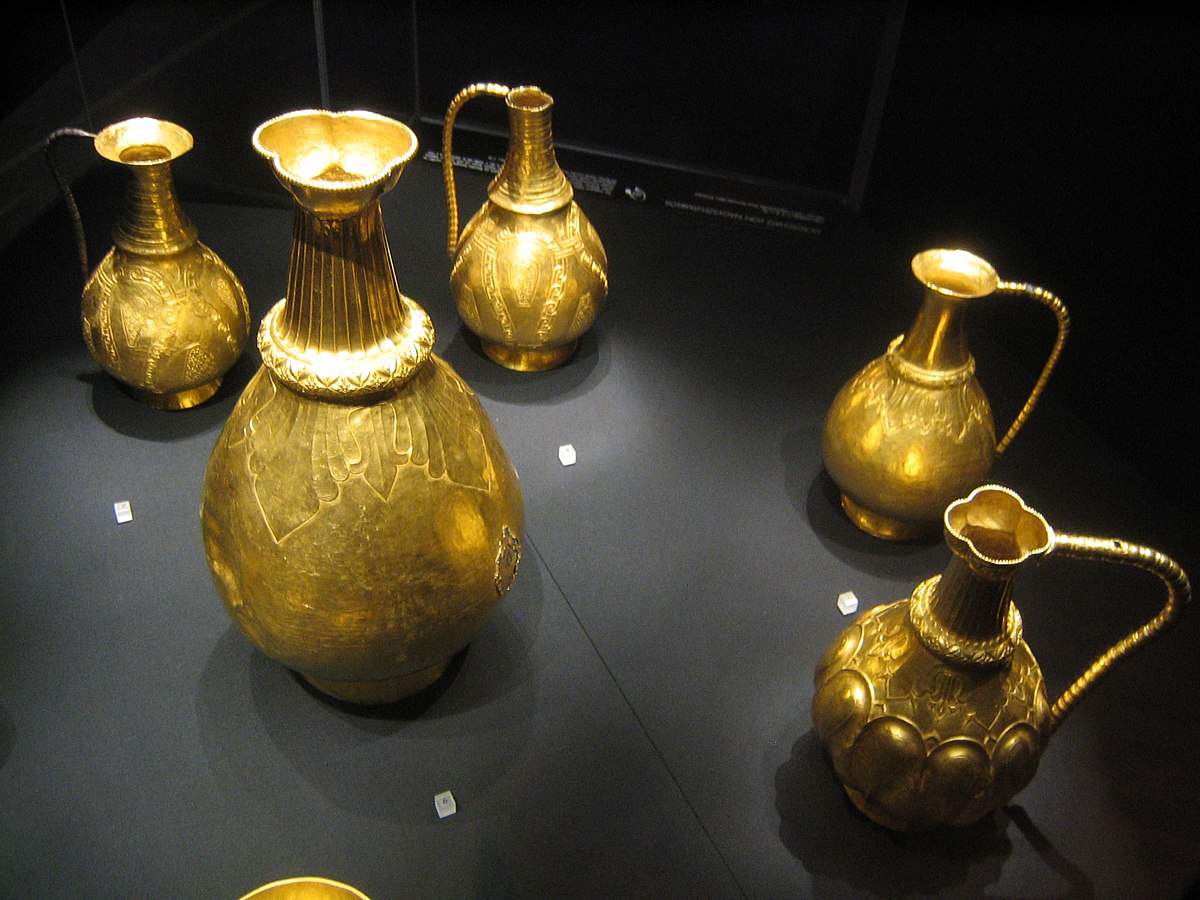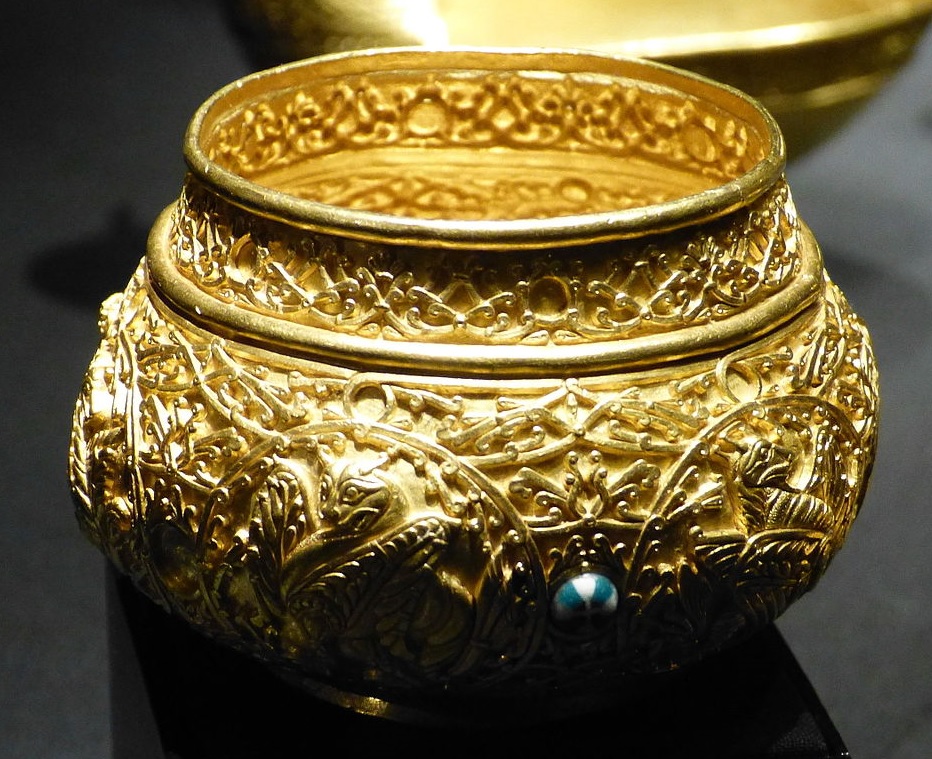Golden Bull Bowl from the Treasure of Nagyszentmiklós, found in 1799 CE, near Nagyszentmiklós, then in the Kingdom of Hungary, now in Romania.

This piece is known in Hungary as the ‘Attila’s Cup’. The animal depicted is actually a hybrid of a bull and a lion. The cup is one from the matching pair, dated 6th-8th Century CE.
National Museum of Romania
#archaeohistories







